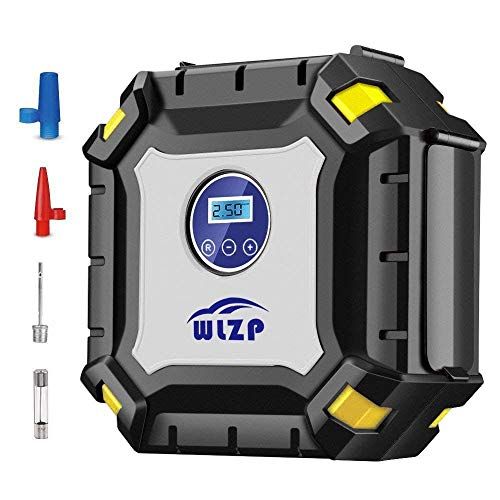BobVila.com and its partners may earn a commission if you purchase a product through one of our links.
Photo: Tom Scalisi
Most drivers have looked down at their dashboard and noticed a warning light indicating a tire with low pressure. If you drive for a minute or so and the light stays on, it’s time to take action and check your tires. You can either pay for air at the gas station pump or grab your trusty tire inflator and handle the problem yourself.
Whether it’s battery-operated, 110-volt electric, or one that plugs into your car’s 12-volt system, the right tire inflator is just the ticket when you’re in a pinch. In no time at all, these noisy day-savers can boost a low tire to optimal pressure.
Choosing the best tire inflator for your needs helps keep your vehicle running at its best. From poor gas mileage to terrible ride quality, tires low on pressure can make driving problematic. Instead, arm yourself with one of the best tire inflators from this guide.
Photo: Tom Scalisi
What to Consider When Choosing the Best Tire InflatorBefore comparing products, it’s helpful to have a little background. This section will cover the key considerations to keep in mind when looking for a tire inflator. From power source to readability, pay attention to these factors when making your choice.
Power SourceTire inflators use electric motors and pumps to fill your tire.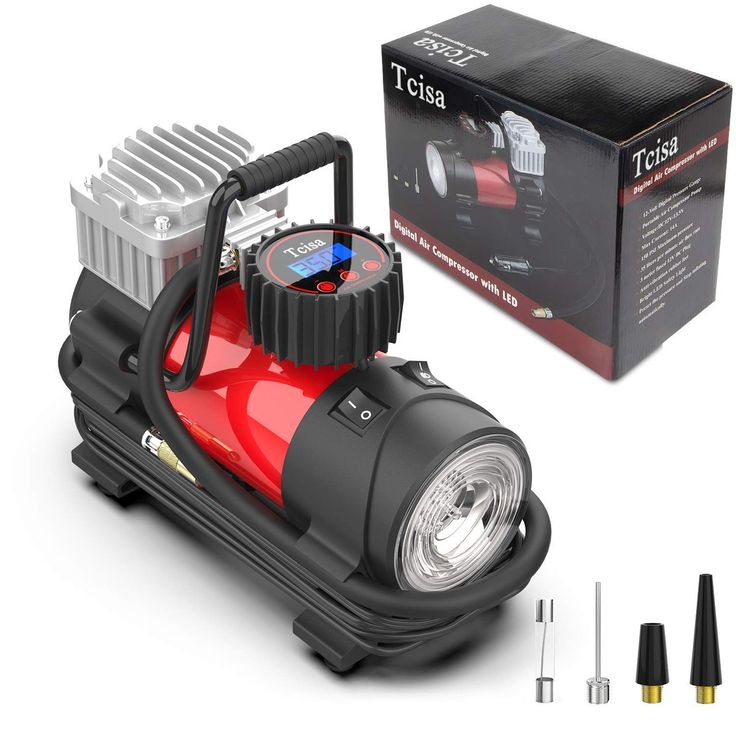 They need a power source to do that, and there are two options: corded and cordless.
They need a power source to do that, and there are two options: corded and cordless.
Corded inflators that use 12V power plug into your vehicle’s 12V jack to run off the car’s battery. Some may clip directly to the battery, like jumper cables. These inflators are convenient because they don’t require keeping an additional battery charged. As long as the car’s battery has power, the inflator can operate.
While most corded inflators run on 12V power, there are flexible models that use both 12V and 110V power. These models plug into a standard electrical outlet as well as 12V jacks.
Cordless inflators are battery operated and use rechargeable batteries to power the motor and pump. Some cordless inflators have built-in batteries that charge via USB or 110V power, while others have removable batteries.
Cordless inflators offer quite a bit more flexibility than a corded 12V inflator, as they don’t require an additional power source to fill a tire. For this reason, they’re just as good at filling bike tires and sports equipment as they are at pumping pressure into car tires.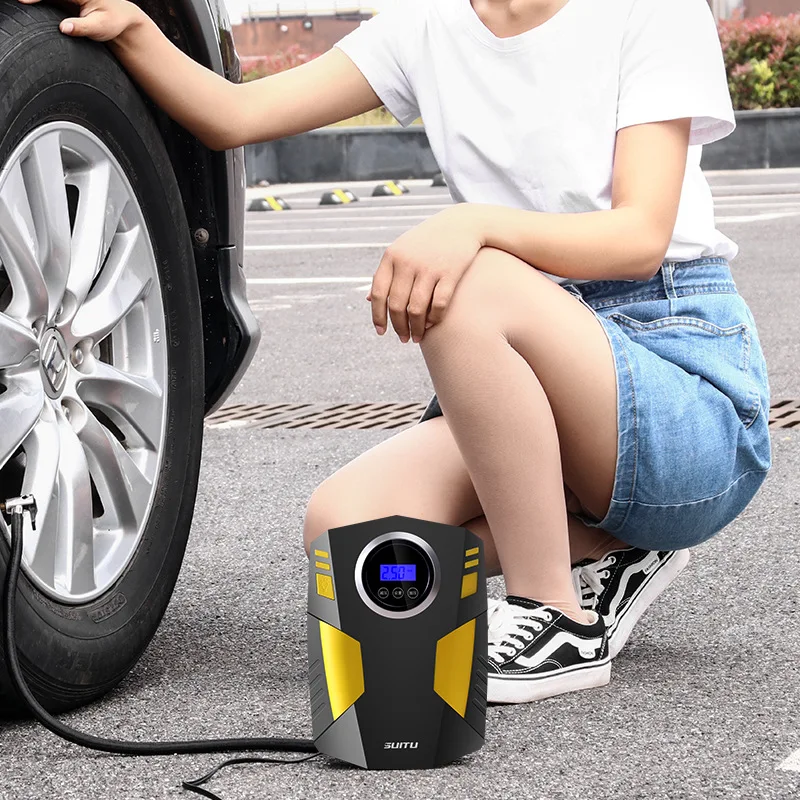
When it comes to tire inflators, pressure usually equals speed. The higher the pressure a tire inflator can produce, the quicker it can fill a tire. In order to avoid spending too much time filling a tire, look for a compressor with at least 100 PSI. However, an inflator with a maximum pressure of 150 PSI will have it up and running even faster. Most tire inflators can fill your car’s tire to the recommended 30 to 40 PSI without an issue.
Inflation TimeWhen choosing a tire inflator, the amount of time it takes to pump up a tire can be a significant factor. Inflation time can run from around 10 minutes to up to 20 or 30 minutes, depending on the tire inflator and its output. The less time spent filling a tire, the sooner the vehicle or bike can get on the road.
Duty CycleAir compressors operate on what’s known as a “duty cycle.” The duty cycle describes how long a compressor can run before needing a certain amount of time to cool down.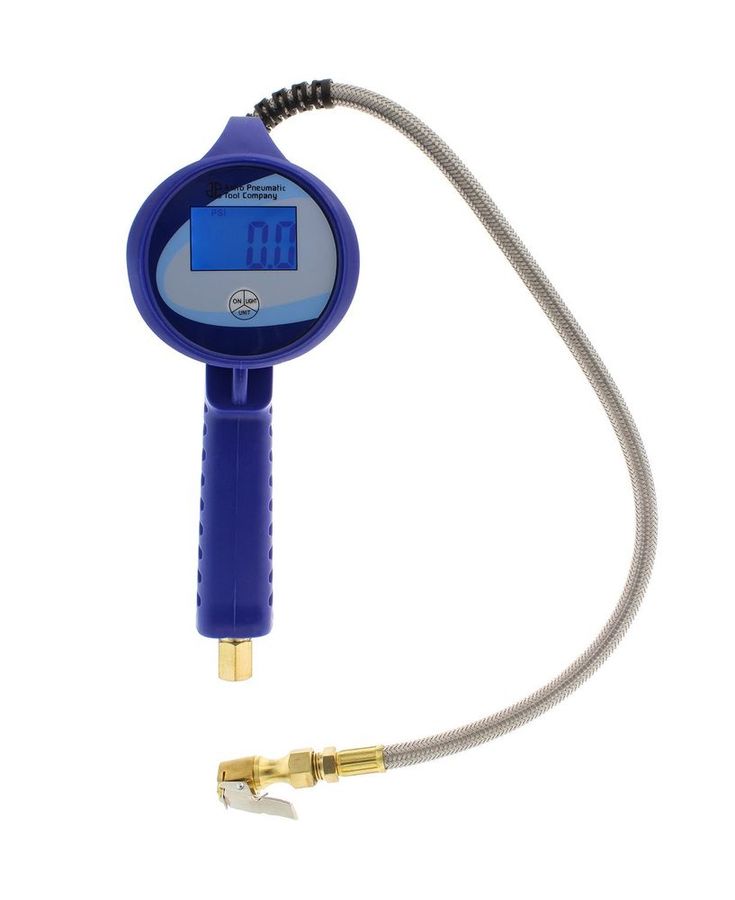
Many tire inflators can only run for 15 minutes or so before needing a break. They have to run at high speeds to produce the amount of pressure necessary, and compressing air creates heat. Also, their compact design causes them to retain that heat, so they’re not able to run as long as a pancake or full-size compressor. These larger compressors are able to fill a tank with air and then shut off, making duty cycle less of a consideration (except in commercial settings).
Shorter duty cycles are rarely an issue when filling pool floats or sports equipment, but it can be a drawback when filling large truck tires. For that reason, many portable tire inflators clearly state they’re not designed for truck tires, though anything will help in a pinch.
Gauge ReadabilityTo get the most wear and mileage out of car tires, fill them with the optimal amount of pressure that the manufacturer recommends. This is usually around 35 PSI.
To put the proper amount of air into the tire, a tire inflator needs a gauge that’s easy to read. Inflators with digital gauges are the easiest, especially if they have a light in the background or backlit. However, analog gauges also work well if their faces have large numerals. Most analog gauges don’t have a backlight, though, so they can be challenging to read in low-light situations.
Inflators with digital gauges are the easiest, especially if they have a light in the background or backlit. However, analog gauges also work well if their faces have large numerals. Most analog gauges don’t have a backlight, though, so they can be challenging to read in low-light situations.
Small air compressors are stout, tough machines, but they can overheat if they run too long. Manufacturers protect their tire inflators by including built-in automatic shut-off functions.
The three measurements that a tire inflator can take before shutting off automatically are pressure, temperature, and time. A pressure shutoff is particularly handy, as it can be set to the desired pressure, and the inflator will stop pumping air once the tire reaches it. Likewise, if the tire inflator starts reaching a dangerous temperature, typically around 200 degrees Fahrenheit, it will shut down until it cools off. A built-in shutoff could also begin a cooldown process after running for a prescribed amount of time, usually around 15 minutes.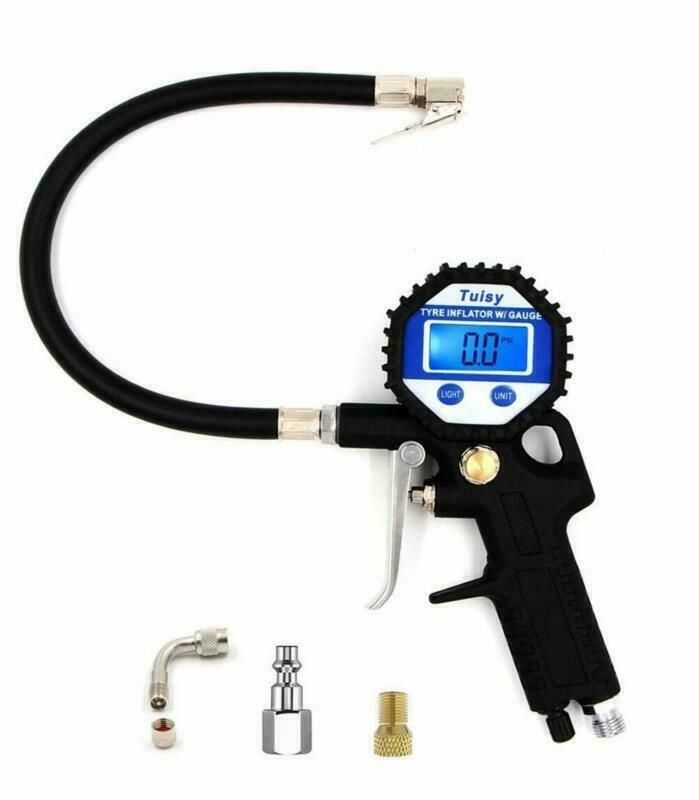
Trying to fill a tire with a short hose isn’t much fun, but tripping over a long, tangled hose isn’t much better. A tire inflator with a 16- to 20-inch hose generally works best—long enough to easily reach most tires but still manageable.
For a longer hose that’s also manageable, look for a tire inflator with a coiled hose. These hoses stretch considerably, often enough to fill each of the four tires without moving the compressor. These inflators can be very helpful for off-road enthusiasts and large vehicles like pickup trucks and SUVs.
Weight and PortabilityPeople often look for a tire inflator over a standard air compressor because they’re light and portable—and that’s an excellent reason. A tire inflator can often weigh less than a pound, so you can carry it in one hand.
When heading out on a road trip, a tire inflator can be a handy tool, though trunk space can get tight on a longer trip. A compact inflator can fit nicely in the trunk without taking up valuable space needed for luggage or snacks.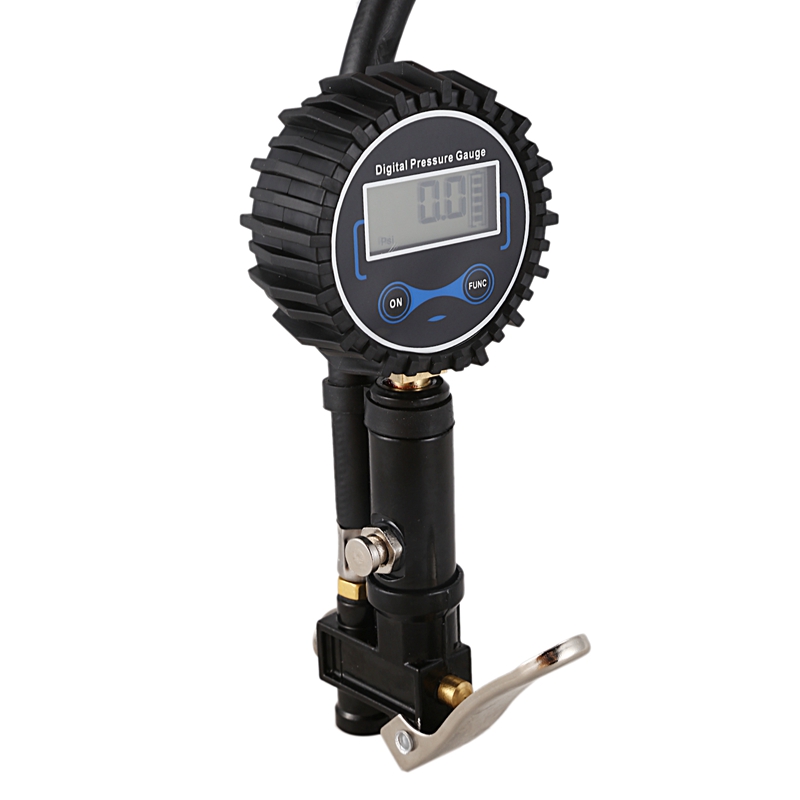 Most tire inflators fit this bill, but compact models take up even less space.
Most tire inflators fit this bill, but compact models take up even less space.
If the tire pressure warning light pops on, indicating some lost pressure overnight, the fix needs to be fast and straightforward. This requires a tire inflator that’s easy to use.
While tire inflators are often simple by design, there are a few features that can make using them even easier. For example, a programmable pressure regulator will prevent overfilling the tire. Another handy feature is a built-in pressure gauge. This shows how much pressure is going into the tire without having to remove the hose to check it with a separate tire gauge.
Our Top PicksWith that background on what to look for when shopping for one of the best tire inflators for your needs, it’s time to start comparing the top products. This section is a compilation of some of the best tire inflators on the market. This list considers the factors listed above, from convenience and portability to pressure and power source.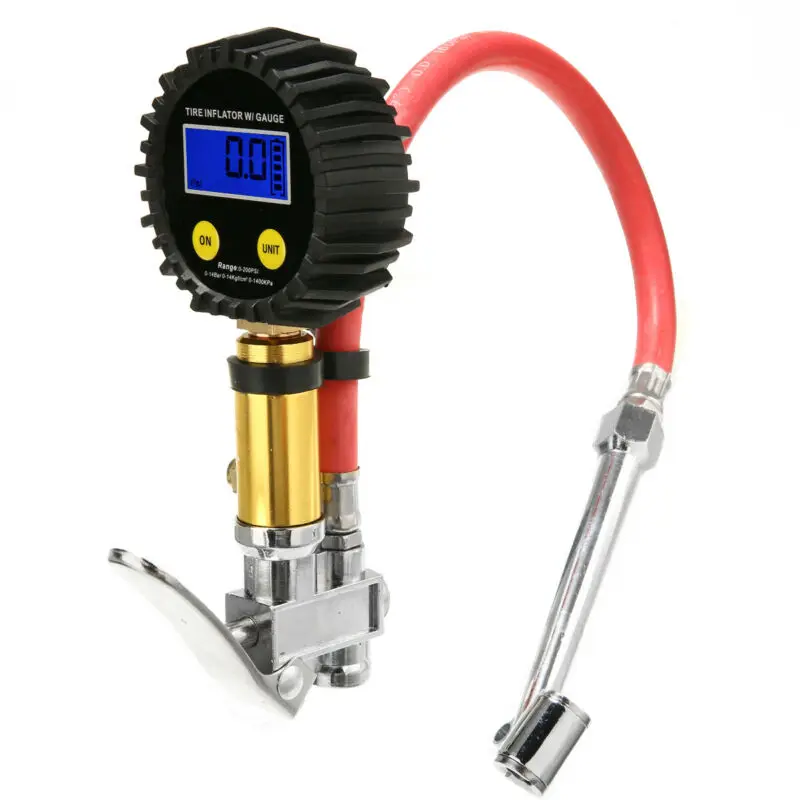 In fact, I tested each of the following inflators to ensure they’re up to snuff.
In fact, I tested each of the following inflators to ensure they’re up to snuff.
Photo: amazon.com
Check Latest Price
The Makita MP100DZ 12V Max CXT Cordless Inflator is a battery-operated model that can pump up to 120 PSI of pressure into a car, bike, or tractor tire. It’s compact and lightweight, so there’s no need to lug a large, unwieldy compressor to the tire. The high-visibility pressure gauge shows exactly how much air pressure is in the tire. By presetting the MP100DZ, it even turns off automatically when the tire reaches the desired PSI.
I found that there was a lot to like about this Makita tire inflator during testing. It had plenty of power (filling the fastest of all the inflators in the group) while being compact and comfortable to hold during inflation. The pressure was easy to set, and the gauge was accurate to within 1 PSI of the vehicle’s tire pressure monitor.
Product Specs
Pros
Cons
Get the Makita MP100DZ tire inflator at Amazon, The Home Depot, and Walmart.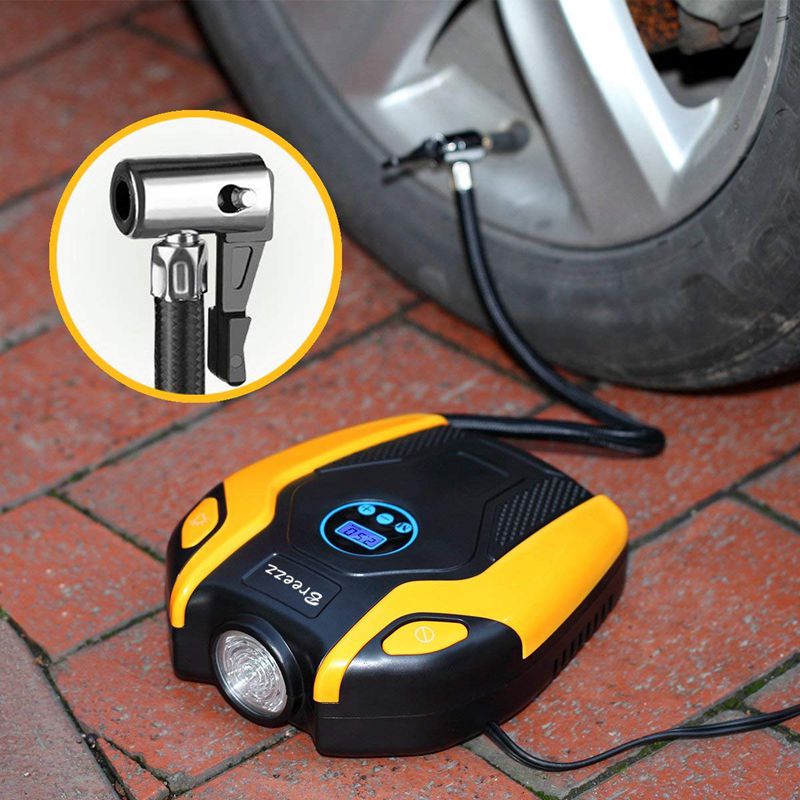
Photo: amazon.com
Check Latest Price
The Ryobi P737D is an affordable battery-operated tire inflator that is simple and straightforward, yet it can boost a tire up to 150 PSI. Its pistol-grip design is ergonomic and comfortable to use, and it houses two additional needles for blowing up pool toys and athletic balls. It features a 20-inch snap-on hose for standard tire valves and weighs just 2.5 pounds.
Originally, the P737D featured an analog gauge, which Ryobi has upgraded to a digital gauge, and it’s a welcome addition. I did feel like the Ryobi was a little bulky in hand during testing, but it was more than up to the task of filling anything, including truck tires. With the battery attached, it’s actually a little heavier than most other models, but it has a better battery life and plenty of power.
Product Specs
Pros
Cons
Get the Ryobi P737D tire inflator at Amazon, The Home Depot, and Walmart.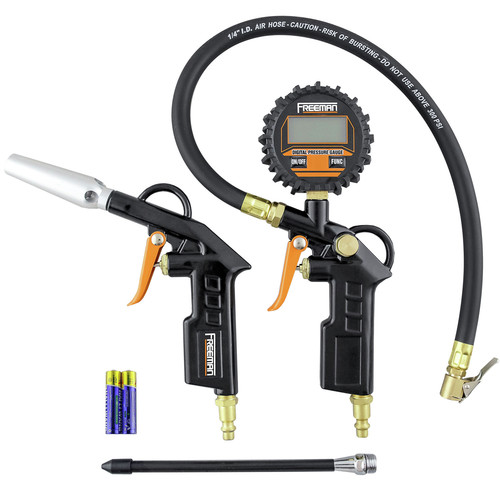
Photo: lowes.com
Check Latest Price
For a high-quality tire inflator that provides plenty of power options, the Craftsman V20 CMC3520B inflator is worth a look. This inflator runs on 110V or 12V power and comes with a 4-Ah battery to ensure strong inflation power. It also includes a 20-inch hose, a digital pressure gauge with a regulator, and onboard cord and hose storage. The CMCE520B has a maximum pressure of 160 PSI, providing plenty of pressure for filling car and truck tires. Once it reaches the desired pressure, this inflator’s automatic shutoff will turn the compressor off, eliminating the risk of over-inflating your tires.
Testing proved that the Craftsman is a quality compressor, and the increased pressure over other models is really a standout feature. I liked that all the storage was on board for the different valve attachments, both AC and DC wires, as well as the flexible hose for floats and air mattresses. I also liked that it sits securely on the ground while filling, which is especially nice when coupled with the automatic shut-off.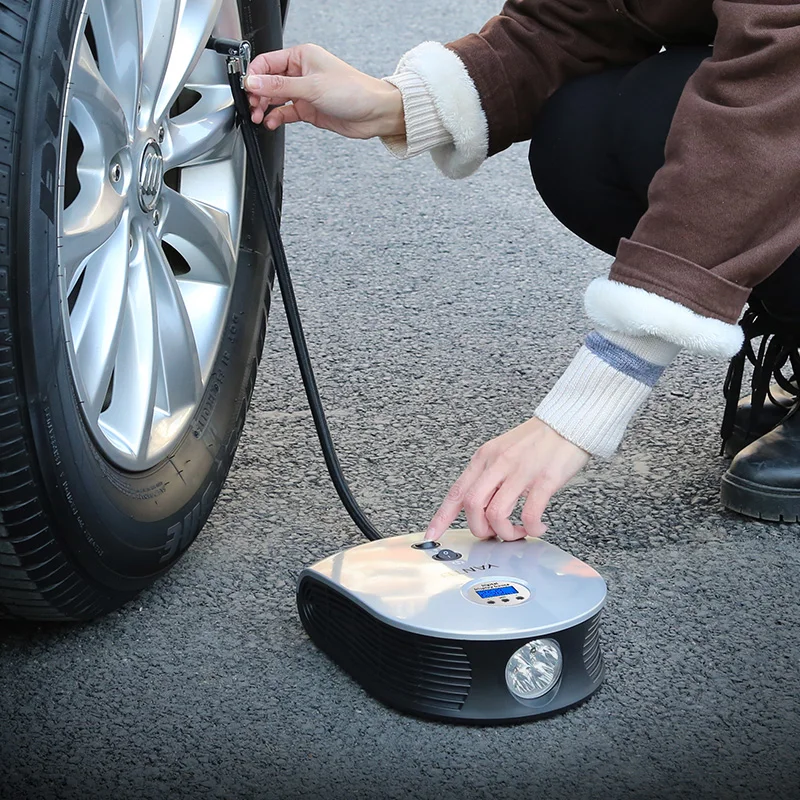 It also filled to within 1 PSI of the vehicle’s TPMS reading, which I felt was very accurate.
It also filled to within 1 PSI of the vehicle’s TPMS reading, which I felt was very accurate.
Product Specs
Pros
Cons
Get the CRAFTSMAN V20 tire inflator on Amazon and at Walmart.
Photo: walmart.com
Check Latest Price
Should a tire lose pressure at a mall parking lot or campsite, for example, there may not be power readily available for a compressor. The AstroAI tire inflator is powered by a car’s 12-volt battery system. Plug it into the car’s 12V jack and turn on the car’s accessory mode for the power required to take care of a low tire—at least enough to drive it to a tire shop for repair.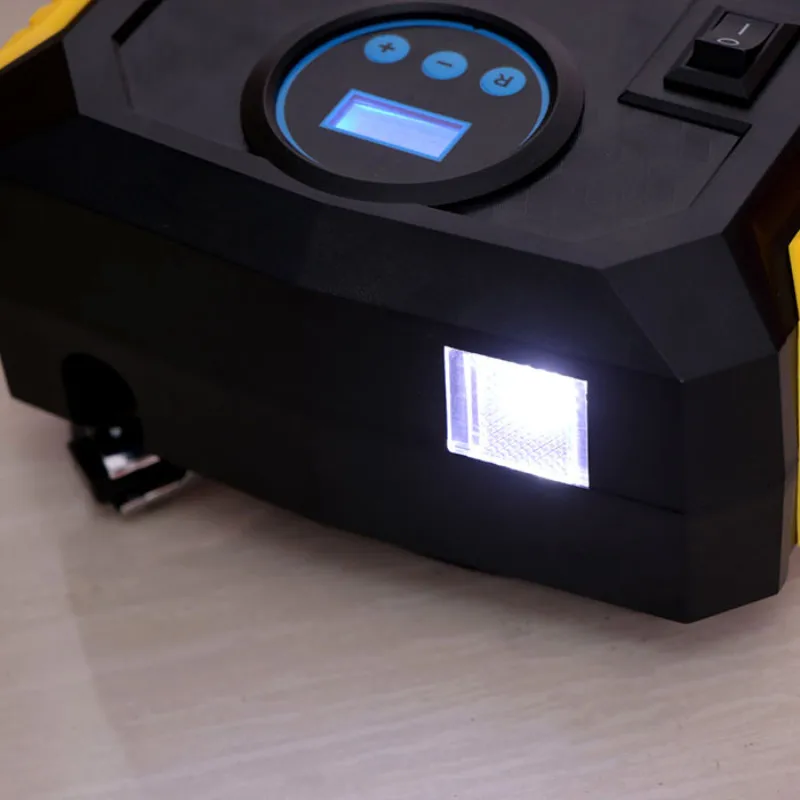 Plus, it features an LED flashlight for better visibility. This relatively small pump will fit in almost any trunk and comes with adapters for pool floats and sports balls. It also comes with an easy-to-read backlit pressure gauge.
Plus, it features an LED flashlight for better visibility. This relatively small pump will fit in almost any trunk and comes with adapters for pool floats and sports balls. It also comes with an easy-to-read backlit pressure gauge.
The AstroAI portable air compressor is really well designed. I like that it looks and operates just like a miniature commercial horizontal compressor. The digital gauge on top was by far the best in the group, as well. It did take a while to pump up a truck tire, but the reading was spot on with the vehicle’s TPMS system, and it was the quietest running in the group, thanks to the rubber feet.
Product Specs
Pros
Cons
Get the AstroAI portable air compressor pump on Amazon and at Walmart.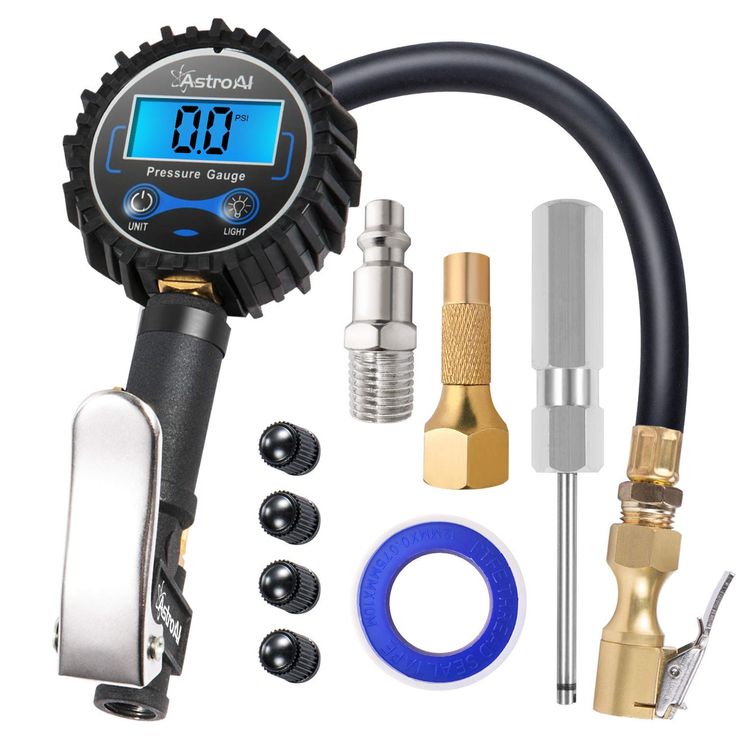
Photo: amazon.com
Check Latest Price
Car owners who already own an air compressor don’t need one of the tire inflators on this list. Instead, they can just use this tire inflator accessory from AstroAI. This valve unit comes with a threaded brass fitting and a comfortable squeeze trigger, plus an easy-to-read backlit digital gauge. The digital gauge turns on automatically when it senses pressure and shuts off after 20 seconds. This valve can handle up to 250 PSI, enough to fill most tires. It comes with a 1/4-inch quick-connect fitting that easily snaps onto most air hoses.
I really enjoyed using this AstroAI tire inflator with my compressor, as the gauge was easy to read and very responsive once I let go of the trigger to check the pressure. I did have to wiggle the connection between the tire valve and this inflator a few times, which may be a bit of a downside to some. Overall, it filled very quickly and accurately when hooked to my heavy-duty air compressor.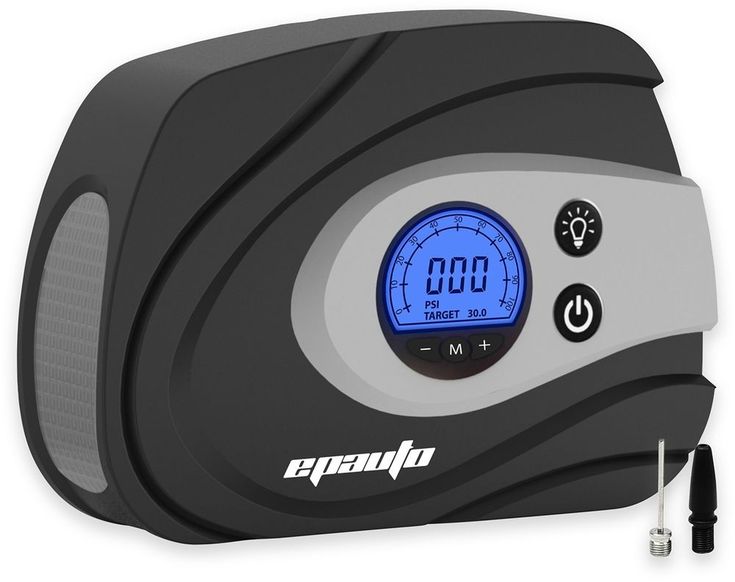 For light-duty compressors, however, it might not fill as quickly.
For light-duty compressors, however, it might not fill as quickly.
Product Specs
Pros
Cons
Get the AstroAI Digital tire inflator on Amazon and at Walmart.
Photo: walmart.com
Check Latest Price
Flexibility matters, and the Kensun air compressor is a portable air compressor and tire inflator that works with 12V power from a vehicle and 110V power from a home. With this kit, homeowners get a needle for sports balls and an adapter for blowing up pool floats and other inflatables. It has a maximum pressure of 120 PSI and will work for 30 minutes before shutting off automatically.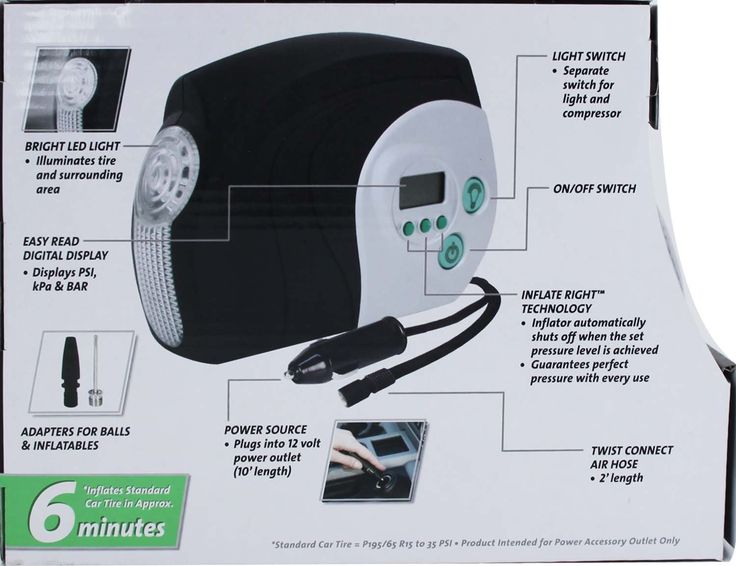
One of the best features that I found in the Kensun Portable Air Compressor is that it’s incredibly simple to operate. There are only two buttons, one for each power source. Beyond that, it was effective and powerful enough to fill a truck tire, and had no problem with the bike tires or basketball. The gauge isn’t incredibly accurate or easy to read, and I did have to sit by it to make sure it didn’t overinflate the tire as there are no settings for auto shut-off.
Product Specs
Pros
Cons
Get the Kensun portable air compressor pump on Amazon and at Walmart.
Photo: amazon.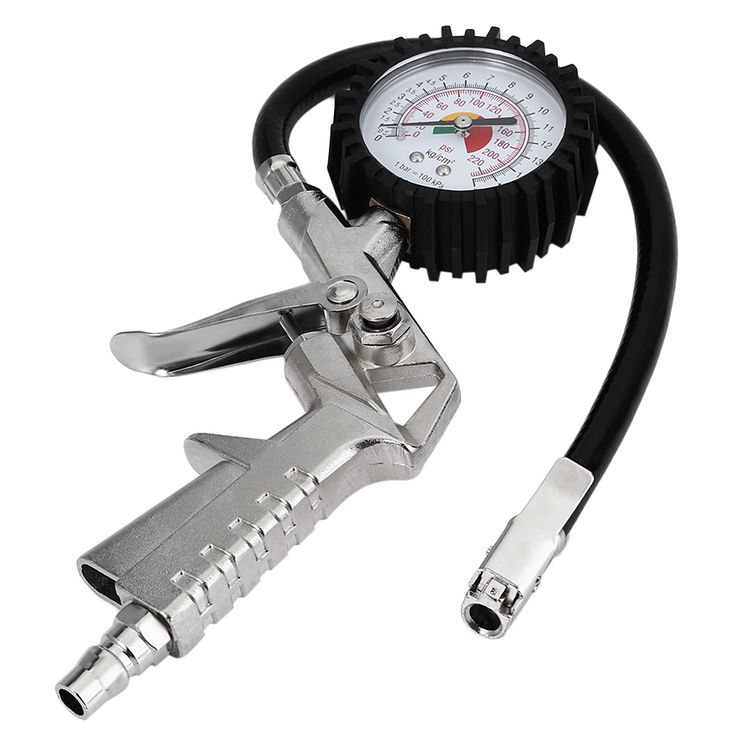 com
com
Check Latest Price
For a tire inflator that fits easily in a glove box or backpack, this mini inflator from Cycplus is a good choice. This tiny pump is only about 7 inches long but produces up to 150 PSI of pressure to inflate car tires, motorcycle tires, or sports equipment. It also has a built-in LED flashlight and a digital pressure gauge. It charges completely in two-and-a-half hours, and functions as a portable power bank for charging cell phones and other electronics. It also features convenient onboard storage for the air tube and other accessories.
Incredibly, this mini inflator was the big surprise in the group. It’s not rated for a truck tire, but because I don’t own a car, a truck tire had to do. It handled the job. It did get hot, and the battery was only capable of filling one tire after filling the basketball and bike tires, but it did the trick. It’s so small that it fits in a glove box, but it’s powerful enough to get a low tire up to snuff. I don’t think I’d use it to fill several tires, but it’s great in a pinch.
Product Specs
Pros
Cons
Get the CYCPLUS portable tire inflator on Amazon.
Our VerdictWhether it’s to fix low tire pressure on the road or just to fill a basketball, a tire inflator is a great tool to have on hand. The variety of inflators I tested fit the bill for a multitude of needs, no matter how I used them. Pack the Makita tire inflator (our overall favorite) for fast and accurate tire inflation on the go. The more affordable Ryobi tire inflator is a great addition for the garage, with the additional needles for filling sports equipment and inflatable pool accessories.
How We Tested the Best Tire InflatorsTo ensure that I recommend the best tire inflator possible, I put the models on this list to the test.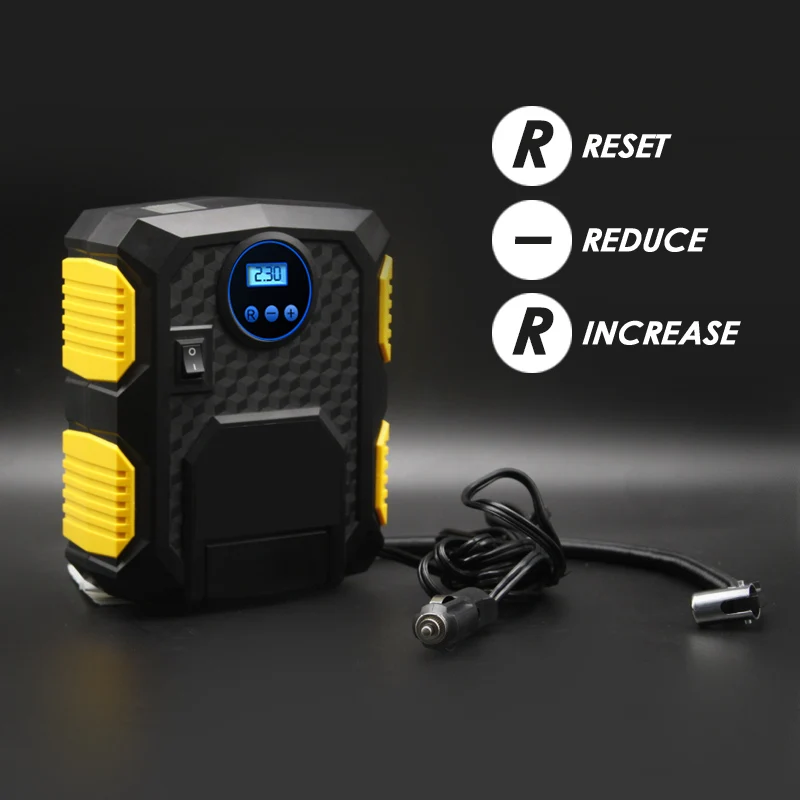 I used a truck tire, a bicycle tire, and a basketball as my test subjects.
I used a truck tire, a bicycle tire, and a basketball as my test subjects.
For the bicycle tire, I deflated the tire as much as possible between filling and pumped it back up with the compressor. I checked to see how easy each model was to connect to a finicky, loose bicycle stem, and to ensure it was easy to control while inflating.
For the basketball, I inserted the filler needle into the ball and deflated it using my bodyweight between each test. I then attached each compressor to see how it would do.
The final test was pumping up a low vehicle tire. Even though many of these models aren’t rated for truck tires, I don’t own a car, so truck tires had to do. I deflated the tire from 41 PSI to 30 PSI, using the vehicle’s tire pressure monitoring system as a reference. Once the pressure was low enough, I connected a tire inflator and timed how long it took to pump the tire up. This gave me an excellent idea of the power and battery life these inflators could offer.
How to Use a Tire Inflator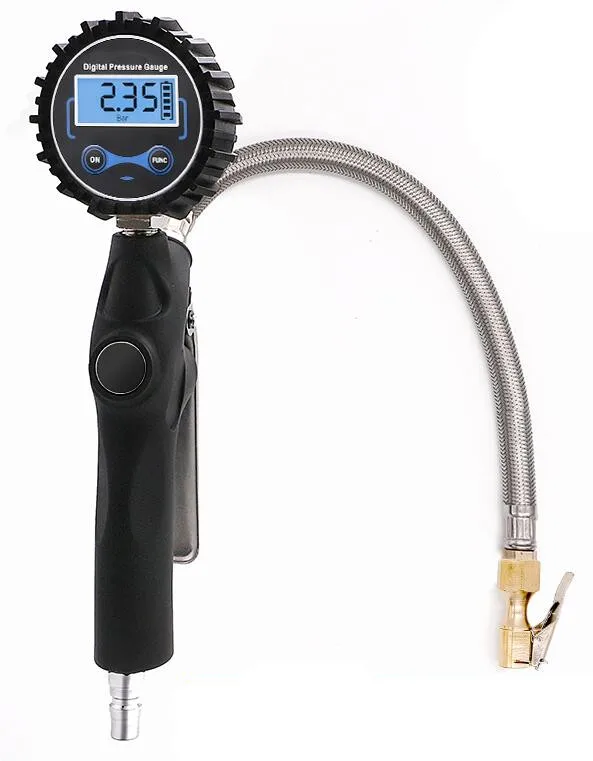 Before filling a tire, check the sidewall of the tire or inside the vehicle’s door to determine the pressure that the manufacturer recommends. With cars and trucks, this is usually between 30 and 40 PSI. Filling a tire within this range leads to even tread wear, a comfortable ride, and better gas mileage.
Before filling a tire, check the sidewall of the tire or inside the vehicle’s door to determine the pressure that the manufacturer recommends. With cars and trucks, this is usually between 30 and 40 PSI. Filling a tire within this range leads to even tread wear, a comfortable ride, and better gas mileage.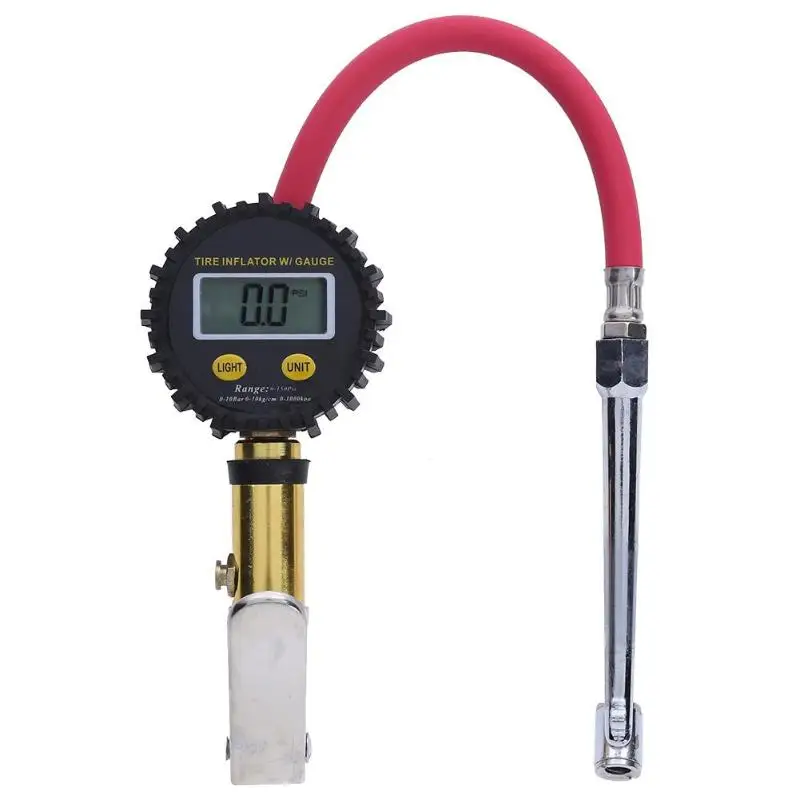
If you still have some questions about your new tire inflator, don’t worry. This section answers the most frequently asked questions about tire inflators. If you still have questions after reading through it, you can contact your tire inflator manufacturer’s customer service department.
Q: Why is tire pressure important?Proper tire pressure helps maintain even tread wear on vehicle tires, allowing for the longest possible life out of a tire set. Proper pressure also improves gas mileage.
Q: How do I check tire pressure?The easiest way to check the tire pressure is with a pressure gauge (available on Amazon). Just remove the valve cap and press the gauge onto the tire’s valve to get a reading.
Q: How do I find the recommended PSI for my tires?This value is usually available in the driver’s side doorjamb, on a label prescribing the correct pressures. However, for older vehicles check the tire’s sidewall for the recommended PSI.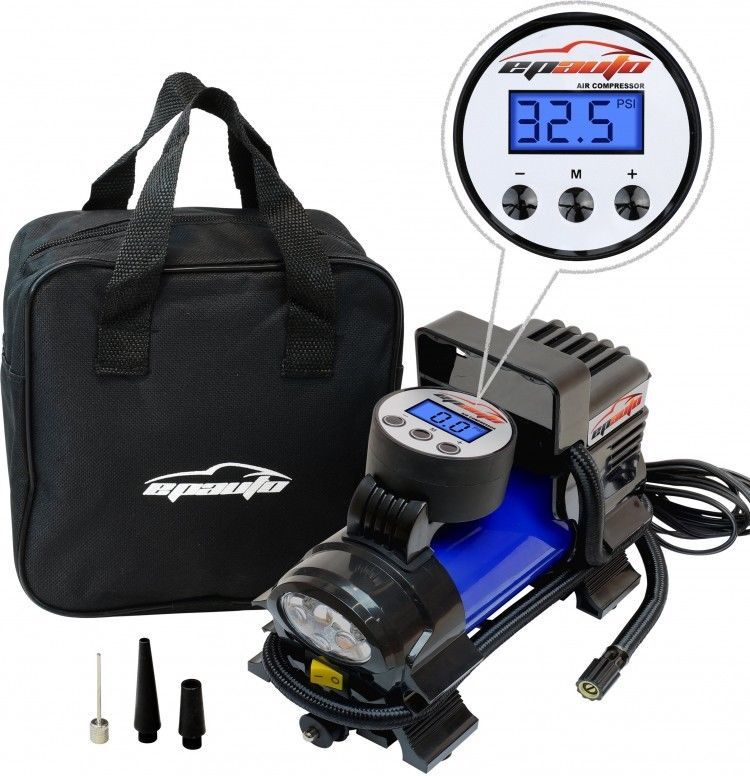 It can be hard to read, so bring a wet rag to wipe off dirt and grime.
It can be hard to read, so bring a wet rag to wipe off dirt and grime.
Air condenses in colder temperatures, so tire pressure drops in cooler seasons. The first chilly mornings of fall usually create a line of cars at gas station tire pumps, a good reason to keep a tire inflator at home.
Toggle Nav
Search
Items 1-24 of 37
Page
Show
12 24 36
per page
Sort By Position Product Name Special Price Package Quantity Price Set Descending Direction
Items 1-24 of 37
Page
Show
12 24 36
per page
Sort By Position Product Name Special Price Package Quantity Price Set Descending Direction
Shop By
Shopping Options
Color
Maximum PSI
Copyright © 2019 Milton Industries, INC.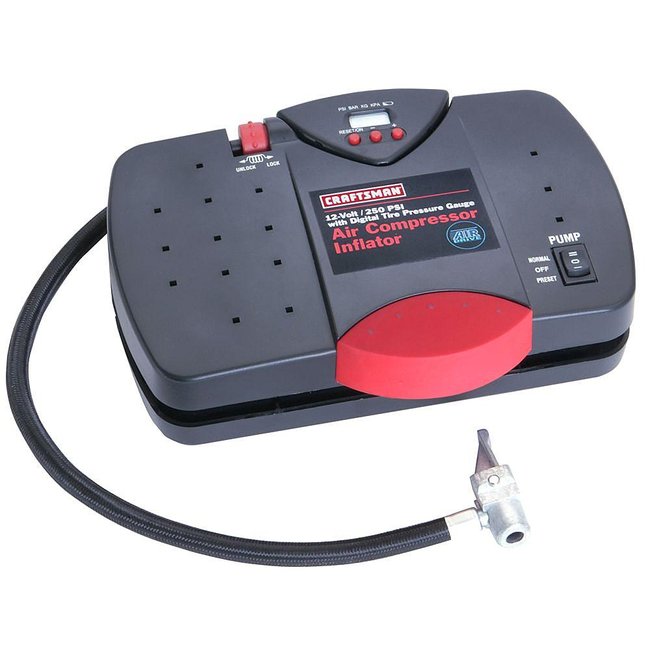 All Rights Reserved.
All Rights Reserved.
Catalog
Pneumotool
Tire inflation guns with pressure gauge
Dimensioning
Tire inflation gun NORDBERG ECO TI5
Price: 916.86 rub Bookmark
Tire inflation gun with 63 mm gauge and 350 mm hose
Price: check by phone Bookmark
Tire inflation gun Wonder Eurodainu 1991 MICHELIN
Price: check by phone Bookmark
Pneumatic tire inflation with pressure gauge, 3-1/2",TPG-U3 Hans
Price: check by phone Bookmark
Tire inflation gun 60 D with bayonet connection GAV
Price: check by phone Bookmark
Tire inflation gun 60 D with quick coupling GAV
Price: check by phone Bookmark
Tire inflation gun 1863.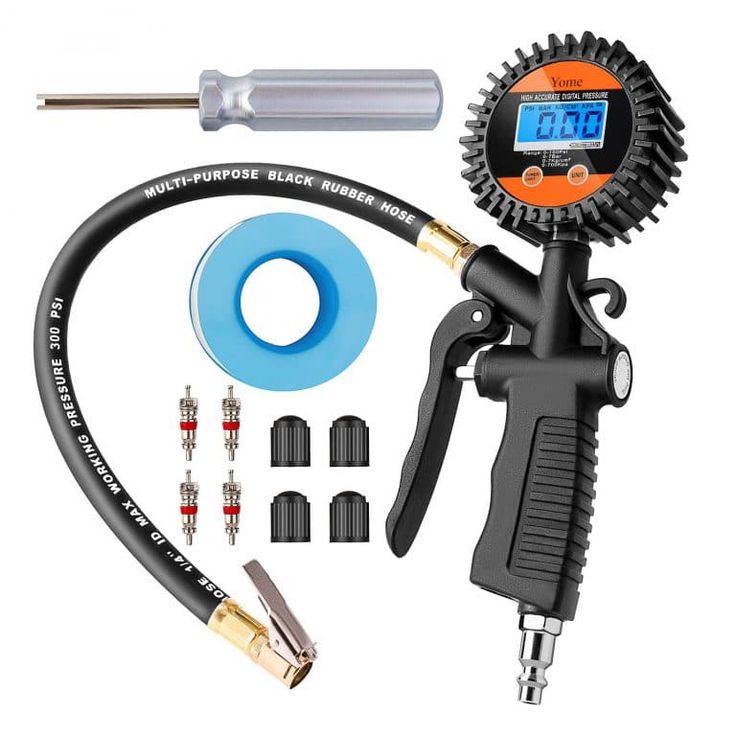 DAR Apac (Italy)
DAR Apac (Italy)
Price: check by phone Bookmark
Tire inflation gun with quick coupling 60 DD
Price: check by phone Bookmark
Tire inflation gun 60 G with quick release
Price: check by phone Bookmark
Tire inflation gun 60 G with bayonet
Price: check by phone Bookmark
Tire inflation gun with gauge 60 DD bayonet
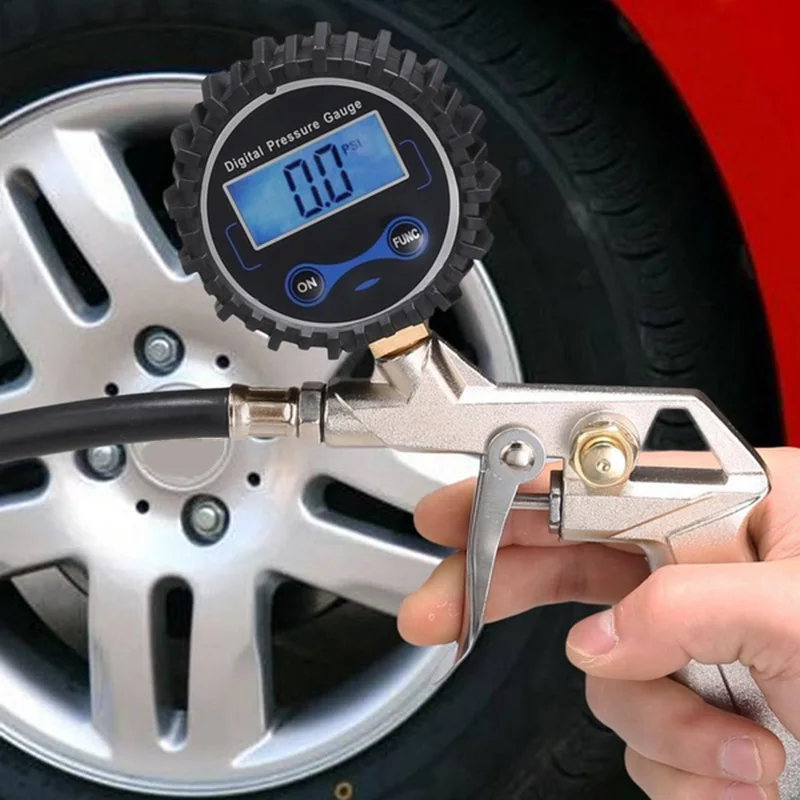 2-17 bar
2-17 bar Price: check by phone Bookmark
Digital wheel inflation gun HS-B0001 HPMM
Price: check by phone Bookmark
Tire inflation gun, digital Ti8D Nordberg
Price: 4034.48 rub Bookmark
Truck tire inflation gun, 13.8 bar Ti9 Nordberg
Price: 4129.94 rub Bookmark
Ti8 tire inflation gun Nordberg
Price: 3361.82 rub Bookmark
Digital wheel inflation gun HS-B0004 HPMM
Price: check by phone Bookmark
Wheel inflation gun HS-B1029B HPMM
Price: check by phone Bookmark
Modern equipment capable of supplying or bleeding air and measuring pressure. As a rule, the mode switch is located on the handle. The case of a product is made of shock-resistant materials. The tool has a long working resource, as well as low explosion and fire hazard.
As a rule, the mode switch is located on the handle. The case of a product is made of shock-resistant materials. The tool has a long working resource, as well as low explosion and fire hazard.
The tire inflation gun is simply indispensable at service stations, car services, tire shops. Professional equipment turns such a laborious process as hitherto tire inflation into a quick and ordinary task.
Car owners know how important it is to have a pneumatic tire and wheel inflation gun connected to a compressor. Initially, these devices were intended only for use at specialized service stations, and were considered specialized equipment. Today you can not only buy a tire inflation gun, but also buy a compressor - a source for pumping compressed air.
The tire inflation gun is not a tool, but an attachment for the compressor, through which it is possible to connect the source to the receiver. However, this device is designed not only to connect the compressor to the tire, but also to supply compressed air, which is important to consider in order to avoid overpressure. Every driver knows that tire pressure must be at the appropriate level, otherwise driving a car will turn into a real torment. Before you learn how to use a tire inflation gun, you should find out why low or high tire pressure is dangerous.
However, this device is designed not only to connect the compressor to the tire, but also to supply compressed air, which is important to consider in order to avoid overpressure. Every driver knows that tire pressure must be at the appropriate level, otherwise driving a car will turn into a real torment. Before you learn how to use a tire inflation gun, you should find out why low or high tire pressure is dangerous.
The tire pressure must be correct, which depends not only on the type of vehicle (truck or car), but also on the size of the wheels themselves. Rubber tires can be easily pumped over, due to the presence of modern equipment (compressors), and not pumped up, which will lead to negative consequences. The danger of operating a car with overinflated or underinflated wheels has the following consequences:
To normalize and control tire pressure, a wheel inflation gun is used. This is a highly specialized device consisting of three parts:
This is a highly specialized device consisting of three parts:
The design of the device is simple, but for its intended use, you will also need a connecting flexible hose. A hose connects the pneumatic compressor to a pumping gun through which compressed air flows.
To inflate the tires on a car, you can use not only a stationary compressor, but also a portable or mobile compressor. For this, mini-compressors are used, which are also equipped with built-in pressure gauges to monitor tire pressure. However, these devices are for use on the road. In order to learn how to use a tire inflation gun, it is recommended to first understand the design of this tool.
 The trigger is designed to control the opening of the valve to supply compressed air to the tire
The trigger is designed to control the opening of the valve to supply compressed air to the tire
The tool has a simple design, which has a positive effect on its cost.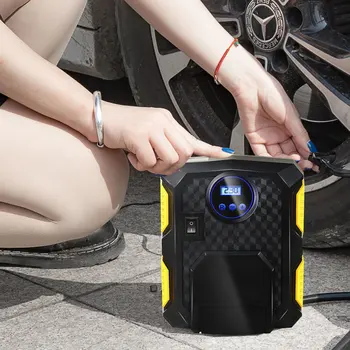 It can be made with your own hands from improvised means at home.
It can be made with your own hands from improvised means at home.
That's interesting! Luxury vehicles have built-in tire pressure sensors. On such machines, you can not control the pressure on the pressure gauge, as the car will automatically give the appropriate signal.
Before you learn how to properly use a tire inflation gun, you need to understand the types of these tools. According to the indication method, the considered devices are of the following types:
The tire inflation gun should not be confused with the tire blower. However, these two tools are interchangeable. If you unscrew the rubber hose from the tire inflation device, you get a blow gun. Similarly, a flexible hose can be screwed onto a blow gun, only in this case it will not be possible to install a pressure gauge. The blow gun can only be used as a tire inflation device on vehicles equipped with a pressure detection system.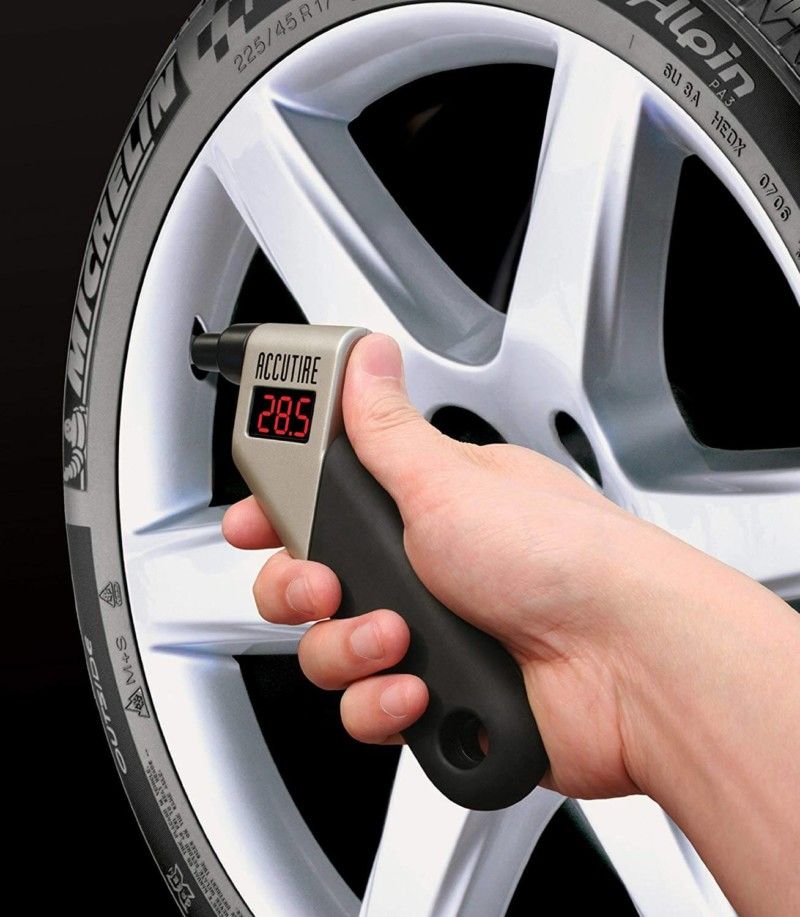 If there is no such system on the car, then you need to buy a special gun for pumping up wheels and tires.
If there is no such system on the car, then you need to buy a special gun for pumping up wheels and tires.
The devices under consideration are of two types - electronic and pointer or mechanical. Electronic devices show with high accuracy, and the user does not need to count the readings. Pressure data is displayed on the display, which allows you to timely stop the supply of compressed air to the receiver. The disadvantage of these devices is that they are expensive, so not everyone can afford such a purchase.
Pointers, clocks or mechanical devices are of simple design. This allows us to classify the tool as inexpensive, however, such devices also have their drawbacks. One of the significant disadvantages of mechanical devices is failure under mechanical stress. It is enough to miss a gun with a pressure gauge once that the gauge with a pointer is out of order.
That's interesting! All pistols have advantages and disadvantages - electronic and mechanical, therefore, when buying, you need to weigh them, and only then make the appropriate right decision.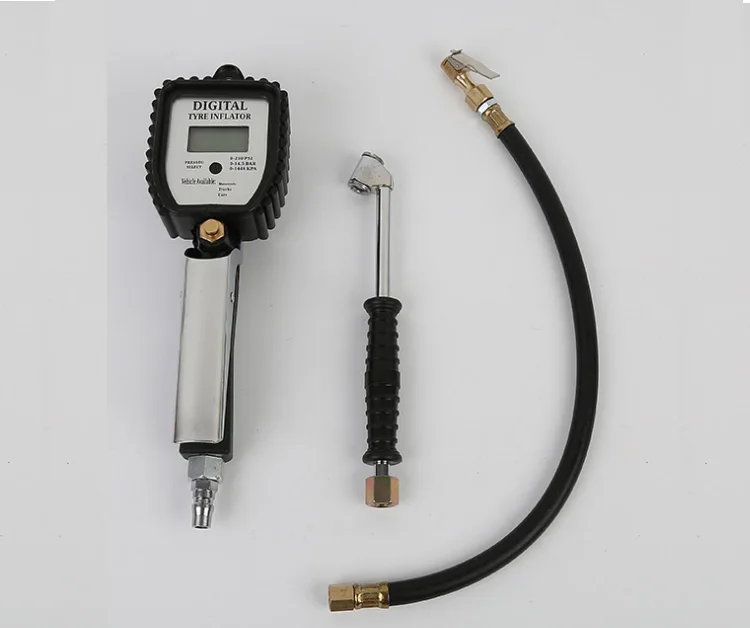
To find out all the pros and cons, you need to do a comparative analysis. Based on the characteristics, an appropriate decision can be made about which type of inflation gun is the best.
Benefits of mechanical guns include:
There are also disadvantages of the devices under consideration, among which it is necessary to highlight the presence of an error, failure during mechanical action, as well as the need to count data on a scale. You can choose such tools for pumping up wheels on cars, bicycles, motorcycles and other rubber products.
Benefits of digital devices include:
Digital devices have some drawbacks - the need to replace autonomous sources, control the storage of the device, as well as failure at the slightest mechanical impact.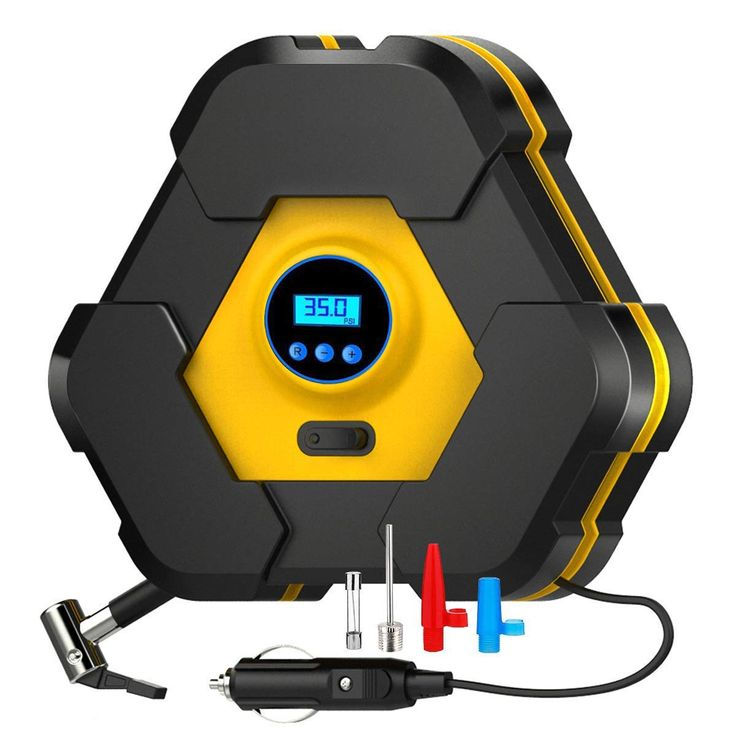
From all that has been said, it should be noted that for a house or home garage that has a compressor, a gun with a dial gauge is suitable. If you need high accuracy of readings, then it is recommended to buy a digital device, the cost of which can be found in the Cylinder online store.
This is interesting! The pressure gauge gun works in the same way as the purge tool. However, they have a difference - these are the features of the application.
Checking the pressure in the tires of your car is an activity that every car owner must perform. How often should tire pressure be checked? The answer is influenced by the following indicators:
All these parameters must be taken into account in order not to end up driving with flat tires.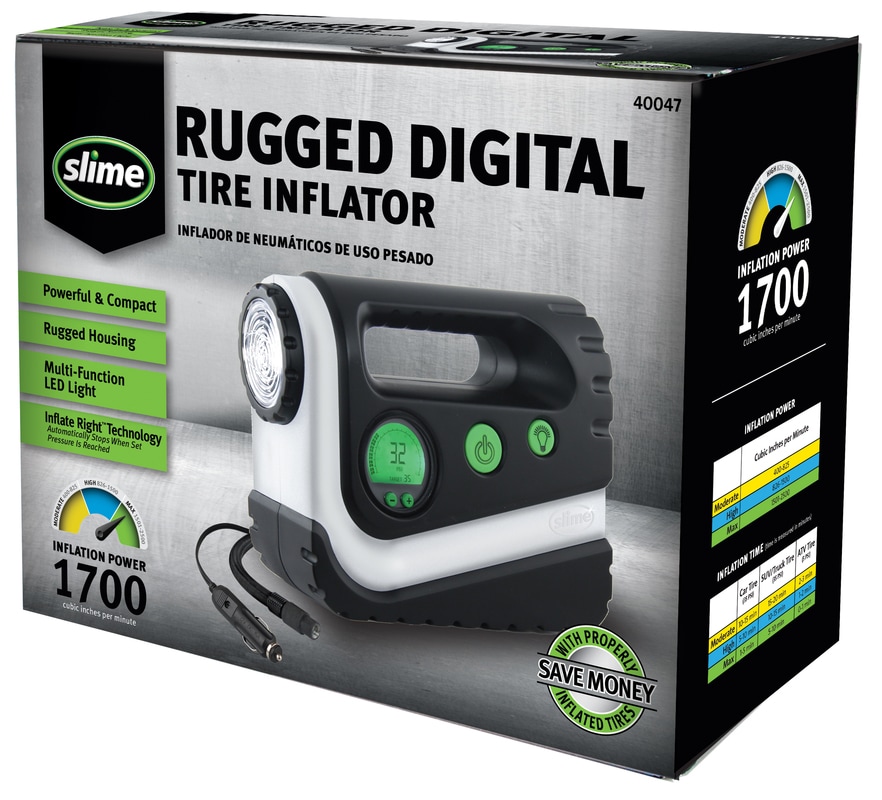 Luxury vehicles do not require such close monitoring, as they have built-in pressure monitoring sensors. As soon as the on-board computer notifies the driver of the pressure drop, pumping should be done.
Luxury vehicles do not require such close monitoring, as they have built-in pressure monitoring sensors. As soon as the on-board computer notifies the driver of the pressure drop, pumping should be done.
Visually it is very difficult to identify the need to repressurize the tire, especially if the wheel is flat by 0.1-0.5 atmospheres. Tire inflation guns, although they have a simple design and principle of operation, however, you need to know how to work with them correctly.
Before using a tire gun, there are a few things to keep in mind:
If you are replacing a tire on a wheel, you can inflate the tubeless at home if you use the appropriate compressor power.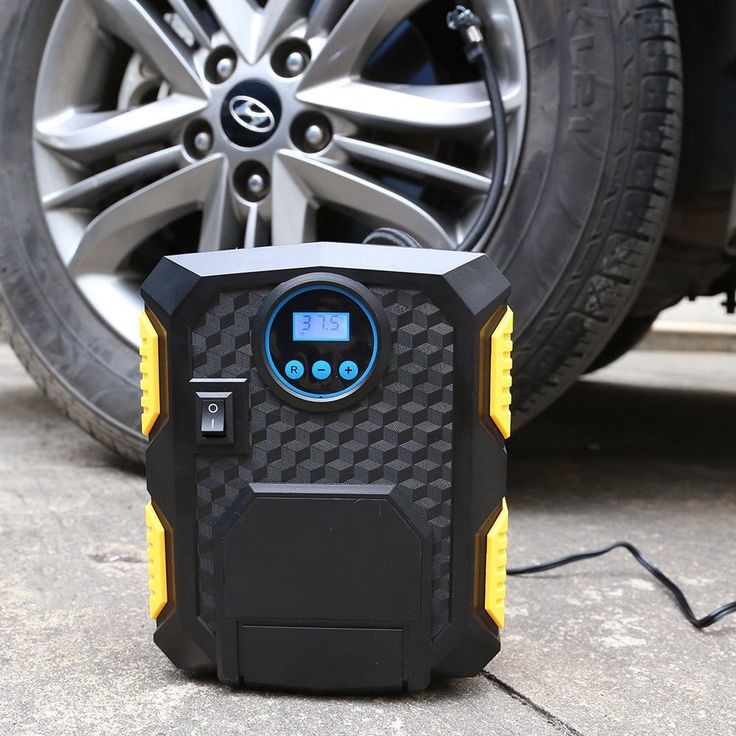 As soon as everything is ready for pumping the wheels with a gun with a pressure gauge, you should get to work.
As soon as everything is ready for pumping the wheels with a gun with a pressure gauge, you should get to work.
The principle of using the tire inflation gun with pressure gauge is as follows:
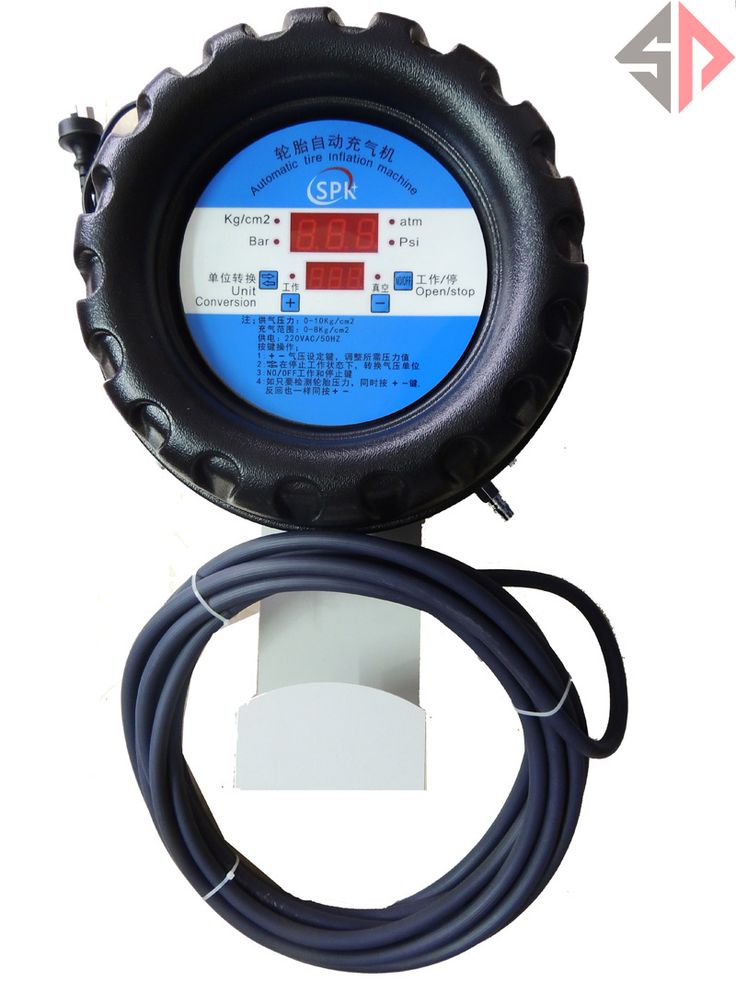 This reset button, which is responsible for depressurizing the tire
This reset button, which is responsible for depressurizing the tire When inflating, keep in mind that the pressure gauge needle usually deviates upwards, so periodically remove your hand from the trigger to check the pressure in the tire itself. The deflection of the arrow is the pressure of the compressed air pumped into the tire. You also need to know the following, that the pressure in the front and rear wheels is different. This is due to the load they can withstand. Typically, the pressure in the front wheels should be 0.2 atmospheres more than in the rear.
That's interesting! In winter, the vehicle should be operated with lowered wheels. This is necessary in order to ensure better grip of the wheels with the coating, as well as reduce the likelihood of slipping.
Tire inflation guns, as described above, are classified into household and professional.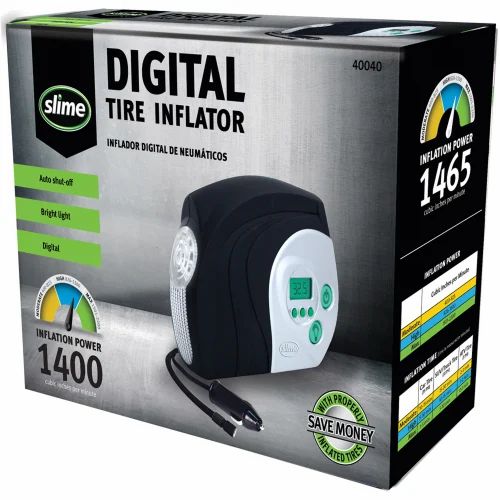 They differ in the components from which they are made, as well as in cost. For everyday use of the tool, household models are used, which are intended for infrequent use. They are made using low quality components, which negatively affects their service life, as well as positively on the price. There are inexpensive household devices from 100 hryvnia.
They differ in the components from which they are made, as well as in cost. For everyday use of the tool, household models are used, which are intended for infrequent use. They are made using low quality components, which negatively affects their service life, as well as positively on the price. There are inexpensive household devices from 100 hryvnia.
Professional devices differ from household devices in that they are manufactured using high quality components. These components provide a long tool life. Professional models are designed for frequent use, and therefore suitable for service stations, gas stations and tire shops.
In addition to conventional devices, there are also guns for inflating truck tires. The tool has a nozzle in the form of an extension, a durable body that can withstand high pressure, as well as a pressure gauge with two scales and a large measuring limit. This is due to the fact that the pressure in the wheels of trucks is different from cars.
When buying, you need to distinguish between the devices in question so that you do not have to overpay.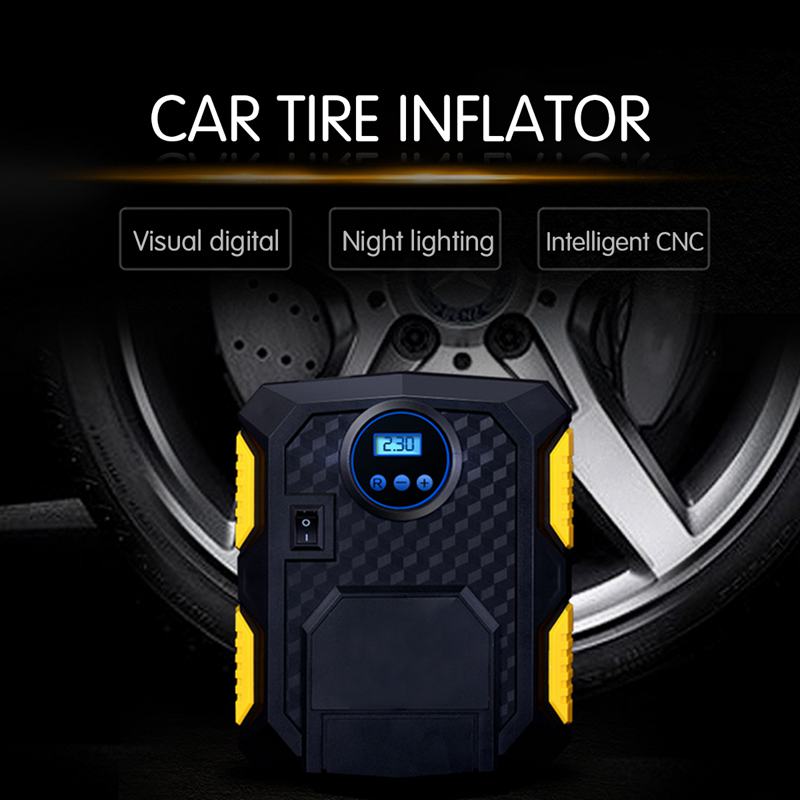 If you do not plan to pump the wheels of trucks, then buying a tool specifically for truck tires is irrational. For the home, you can buy a professional pump gun that will last a long time, but you need to estimate the amount of the overpayment.
If you do not plan to pump the wheels of trucks, then buying a tool specifically for truck tires is irrational. For the home, you can buy a professional pump gun that will last a long time, but you need to estimate the amount of the overpayment.
This is interesting! On the devices in question, rubber flexible hoses often fail, which burst, dry out or tear at the junctions with steel tips. If the hose is damaged, then it can be replaced separately without buying a new gun.
To purchase a tool for the home or workshop, you must consider the following recommendations:
When choosing a tool, the manufacturer of the product must also be taken into account.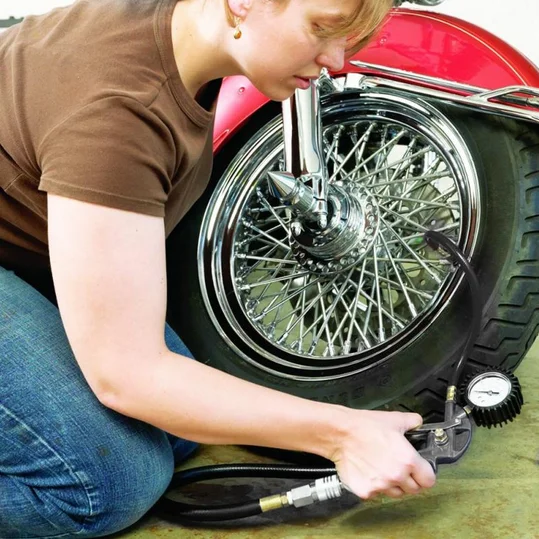 After all, many different companies are engaged in the production of pneumatic tools today. It is necessary to take into account the name of the manufacturer in order to avoid acquiring fakes. Below we will find out where it is better to buy a tire and wheel inflation gun.
After all, many different companies are engaged in the production of pneumatic tools today. It is necessary to take into account the name of the manufacturer in order to avoid acquiring fakes. Below we will find out where it is better to buy a tire and wheel inflation gun.
To buy a quality tire inflation gun, you do not need to go to the market or run to the store. The Cylinder online store is always with you. The Cylinder website catalog contains not only tire inflation guns, but also many other types of pneumatic tools and consumables. When buying, consider the parameters that are indicated in the technical description for the product. The Cylinder presents models of pistols from manufacturers such as Einhell, Mastertool, Intertool, Hausetools, Miol and others.
You can simplify your choice by using the filter on the site, which improves the ease of navigation.